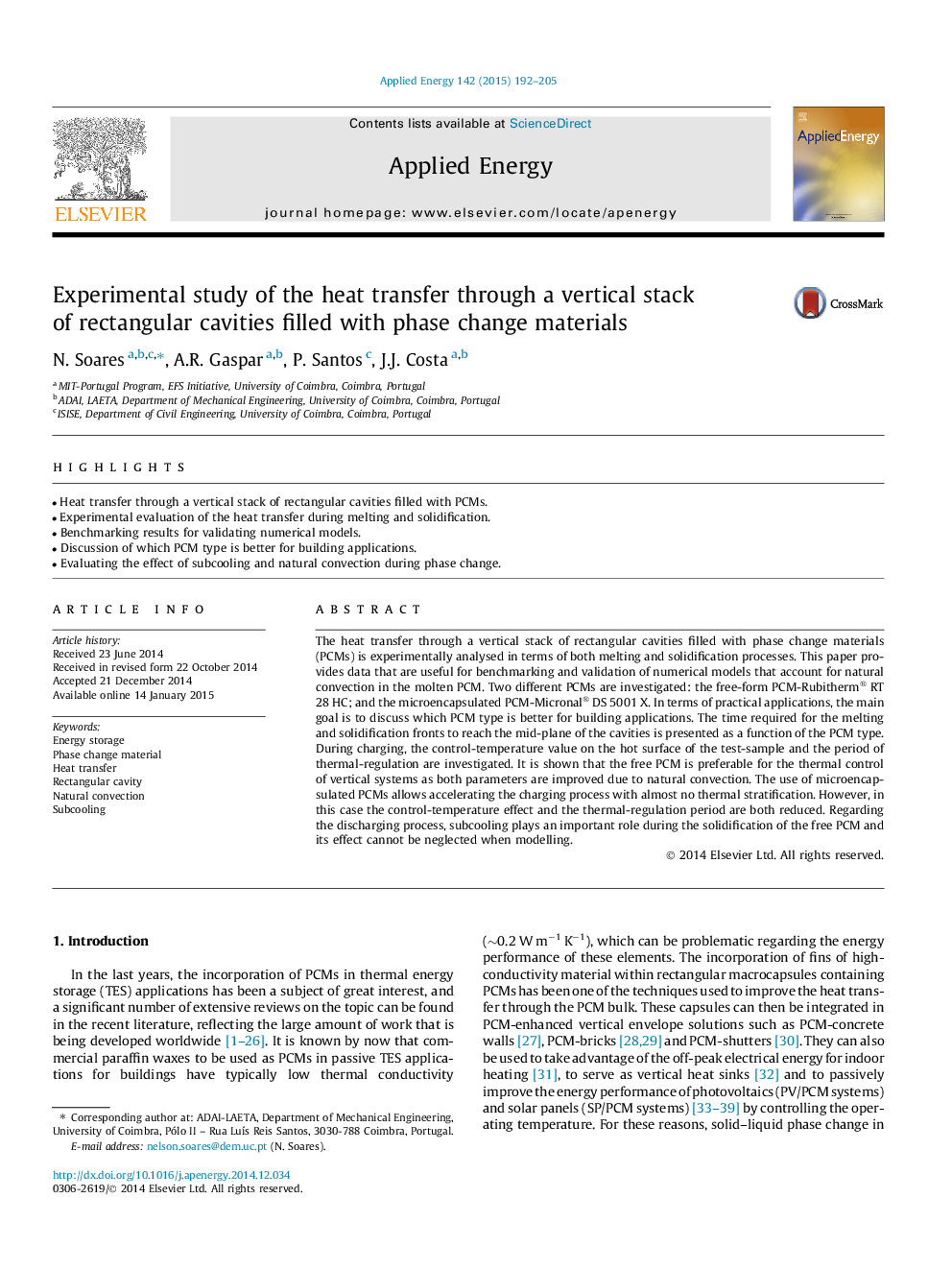| Article ID | Journal | Published Year | Pages | File Type |
|---|---|---|---|---|
| 242585 | Applied Energy | 2015 | 14 Pages |
•Heat transfer through a vertical stack of rectangular cavities filled with PCMs.•Experimental evaluation of the heat transfer during melting and solidification.•Benchmarking results for validating numerical models.•Discussion of which PCM type is better for building applications.•Evaluating the effect of subcooling and natural convection during phase change.
The heat transfer through a vertical stack of rectangular cavities filled with phase change materials (PCMs) is experimentally analysed in terms of both melting and solidification processes. This paper provides data that are useful for benchmarking and validation of numerical models that account for natural convection in the molten PCM. Two different PCMs are investigated: the free-form PCM-Rubitherm® RT 28 HC; and the microencapsulated PCM-Micronal® DS 5001 X. In terms of practical applications, the main goal is to discuss which PCM type is better for building applications. The time required for the melting and solidification fronts to reach the mid-plane of the cavities is presented as a function of the PCM type. During charging, the control-temperature value on the hot surface of the test-sample and the period of thermal-regulation are investigated. It is shown that the free PCM is preferable for the thermal control of vertical systems as both parameters are improved due to natural convection. The use of microencapsulated PCMs allows accelerating the charging process with almost no thermal stratification. However, in this case the control-temperature effect and the thermal-regulation period are both reduced. Regarding the discharging process, subcooling plays an important role during the solidification of the free PCM and its effect cannot be neglected when modelling.
